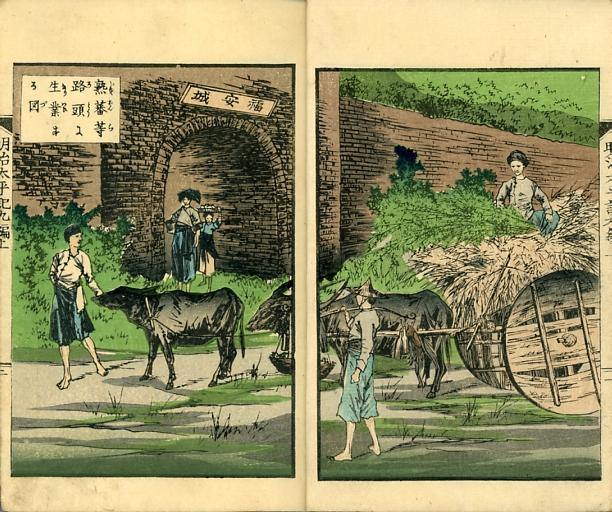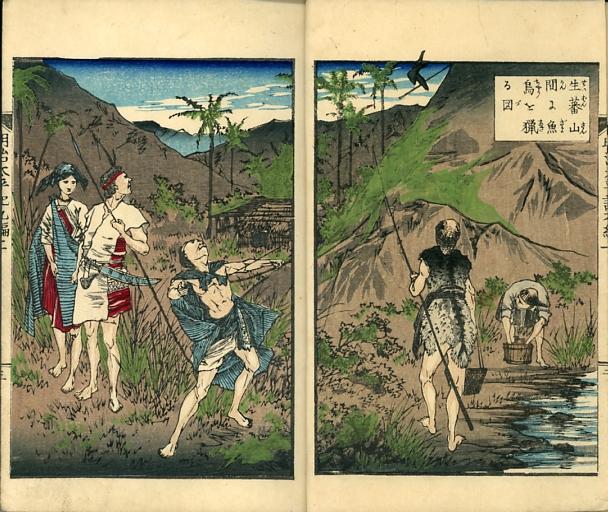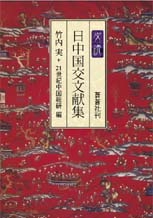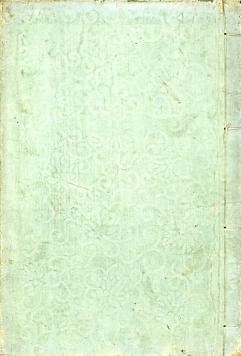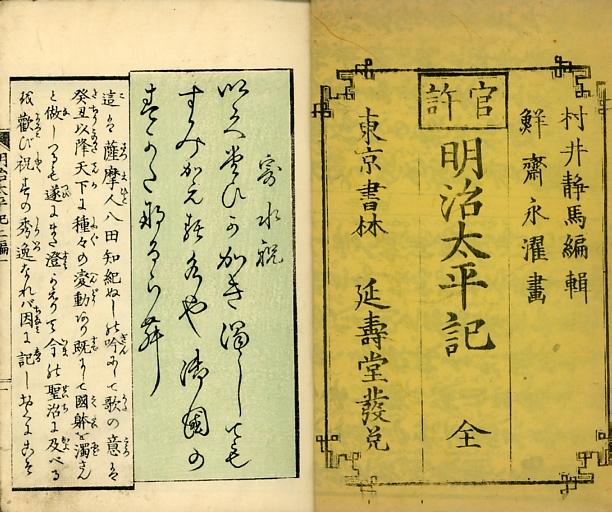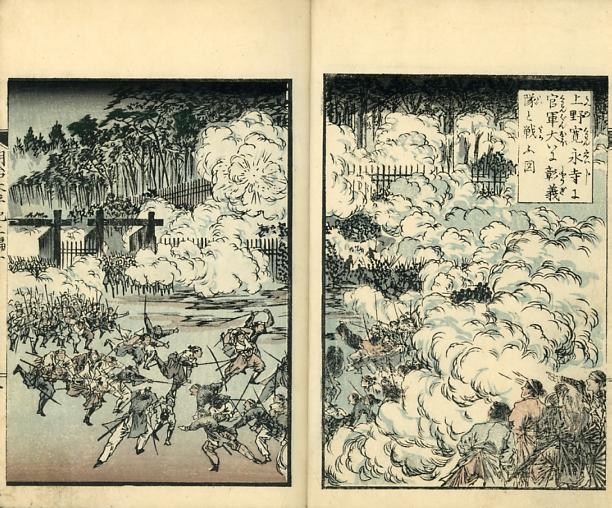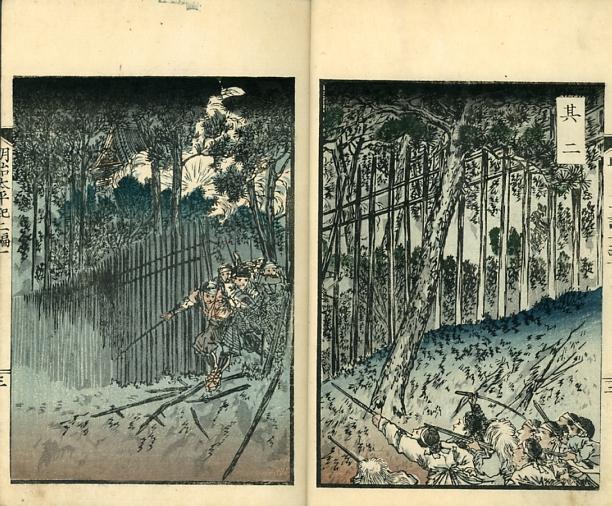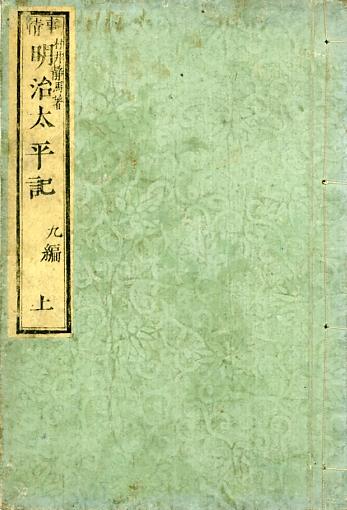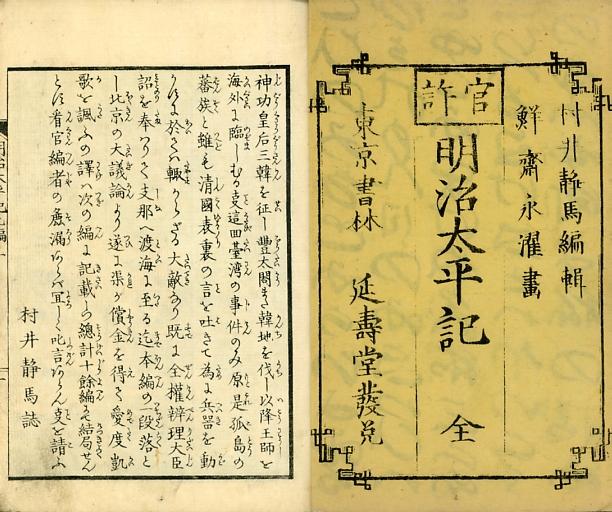Meiji TaiheikiMeiji Great Peace Chronicle
The storied art of domestic and foreign wars By William Wetherall
First posted 1 September 2005 |
Publishing particulars
Murai Shizuma [Compilation]
Sensai Eitaku [Drawings]
Meiji Taiheiki
[Meiji Great peace chronicle]
Tokyo Shorin Enjudo
[Published and sold by Tokyo Bookseller
Enjudo (Kobayashi Tetsujiro)]
24 volumes, 1875-1880
Taiheiki alludes to the 40-volume war epic Taiheiki [Chronicle of the great peace], compiled by several authors and first published around 1371. The epic spans the fall of the Kamakura shogunate to the rise of the Muromachi shogunate in the 14th century, during which the imperial court split into southern and northern factions.
Taiheiki is frequently used as a "mitate" or "ironic analogy" to mean that an era supposedly defined by a "great peace" was, or has been, anything but. Several works, historical and fictional, have been titled Meiji taiheiki, including an historical novel by Kaionji Chogoro (1901-1977), serialized in the Yomiuri shinbun right after World War II, and published as a book in 1952.
Murai's series is perhaps the very first such work to be so titled. Done in the typical manner of an illustrated woodblock printed book at the time -- every character, and its reading, hand carved -- its text is a good example of the fairly readable vernacular writing style of the day.
The volumes cover a number of civil wars and disturbances, including the Battle of Ueno Hill between the Shogitai and new government forces on the eve of the Meiji era in 1868, and the Taiwan Expedition of 1874. The color prints two volumes among others that cover these events are introduced below.
Each of the 24 volumes (hen) consists of a pair of booklets (joge), each consisting of about 20 leafs (40 pages) between soft covers. Each booklet begins with two two-page color woodcuts, and the text of each booklet is interspersed with several one-page and two-page black woodcuts.
Murai Shizuma
Murai Shizuma [Seima?] (村井静馬), the compiler, may have been a Nagasaki shizoku. He also appears to have been the printmaker Utagawa Fusatane.
Murai Shizuma is credited as the "gako / edakumi" (画工) or drawer of a triptych called Kagoshima kibun [Kagoshima tidings], published on 14 April 1877 (otodoke date) by Tsujioka Fumihiko, and signed [Oju] Osai Fusatane (櫻斎房種). The print shows Saigo Takamori and his advisor Kirino Toshiaki mounted on horses, in the center, with several male warriors standing around them. To their left is a contingent of female warriors, while in the background to the right, a battle rages between Saigo's allies and government troops. (Kinoshita and Yoshimi 1999:227)
Utagawa Fusatane was a student of Utagawa Sadafusa. His signatures include Osai (櫻斎), Isshosai (一笑斎), and Ippyosai (一瓢斎). He seems to have been active from around the Ansei period (1854-1860) to around 1898, but his dates of birth and death are not known.
Tsujioka Fumihiko is the "Tsujibun" who reprinted Tonichi nishikie from blocks acquired from Gusokuya. Gusokuya, as Fukuda Kumajiro, published at least one Seinan War triptych designed by Osai Fusatane / Murai Shizuma on 4 June 1877 (otodoke date). Entitled (Denbun) Banmin kofuku [(Hearsay) All people drum bellies], it shows the empress dowager and the empress, and other imperial ladies, handsewing cotton dressings (menzanshi) for wounds, to be sent to the warzone in Kyushu. The title implies that the world is peaceful, the people have plenty to eat, and everyone is taking joy in the comfort and peace provided by the imperial order. (Kishi 1977.8:56-57).
Meiji Taiheiki
The first two of the 24 volumes of Meiji Taiheiki came out in 1875, when many books and nishikie were being published to mark the 7th anniversary of the Shogitai stand at Ueno Hill. It was also the 7th memorial of the Byakkotai (White Tiger Brigade) stand at Aizu Wakamatsu, which took place shortly after the Shogitai incident. And of course the Taiwan Expedition, given so much publicity in 1874 just the year before, was also fresh in everyone's mind.
Adding to the irony of starting a series of accounts of civil disturbances and wars too recent to be the subject of "history" is the fact that Murai and Eitaku could not have anticipated the spate of rebellions in late 1876, and the Seinan War of 1877, that would fill the final volumes of the series.
Meiji "Taiheiki" indeed.
Raw and cooked savages
Chinese living on Taiwan referred to natives who had submitted to Qing (or other embodiments of Chinese authority), settled near Chinese communities, and taken to Chinese styles of life as shufan (熟蕃, J. jukuban) or "cooked savages"). In contrast, natives who did not submit, and therefore did not pay taxes or adopt to Chinese modes of life, and who continued to live in tribes some distance from Chinese and even shufan settlements, were called shengfan (生蕃, J. seiban) or "raw savages".
The Chinese terms must have been known to some Japanese long before the 1871 incident that provoked the 1874 punitive expedition (see reviews of Eskildsen 2002 and 2005). While the terms appeared in Japanese writing on the Taiwan Expedition, it was not until after the Sino-Japanese war of 1894-1894 -- which was fought neither in nor over Taiwan but resulted in the ceding of Taiwan to Japan -- that they gained enough currency to earn them inclusion in Japanese dictionaries. Both are now in Kojien, the most widely used desktop Japanese dictionary. The following definitions are from the 5th (1998) edition.
seiban -- a different race that does not accept cultivation [kyoka ni fukusanai iminzoku]. Used by the Qing Court to refer to people among the [mountainous] Kozan tribes (Takasago tribes) who had not assimilated with the Han race [Han zoku], in distinction from jukuban.
jukuban -- a different race that has been cultivated and has submitted to authority [kyoka sarete kijun shita iminzoku]. Qing Dynasty term used to refer to people among the [mountainous] Kosan tribes (Takasago tribes), which are the indigenous races of Taiwan, who were living on the plains and had assimilated with the Han race. In contrast with seiban.
|
Shogitai
The Shogitai lost a last-stand battle with government troops at Ueno Hill in Edo in 1868 on the eve of the Meiji period. See Shogitai under Politics for related nishikie by Yoshiiku, Eitaku, and Yoshitoshi. |
|
|
|||||
|
|
||||||
|
Taiwan Expedition
Japanese papers whetted and fed an appetite for news about the native tribes of Taiwan. Some stories and pictures spread rumors of cannibalism. Others showed them as people in their daily lives. |
|
|
|||||
|
|
||||||
